The Best (Indoor) Hanging Plants
There are so many benefits of plants — so you may as well add more to your home!
Updated Feb. 5 2020, 3:45 p.m. ET
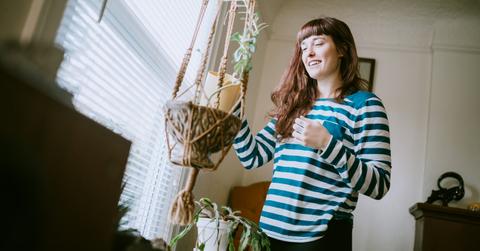
Plants make people happy. Literally — there is a scientific reason that’s a saying. While you may have noticed mood changes while outdoors, indoor plants can do a lot for mood and happiness, too. It’s no wonder, either: According to NASA, indoor plants can purify our air, improve the air quality and actually make us healthier.
If you’re just starting out and your thumb could get a little greener, houseplants like cacti and Aloe Vera are great starting points. Or, if you’re ready to go for the gold (or should we say green), then let’s skip the beginner stuff and go straight to hanging plants for indoor spaces — they’re a chic, natural element that can really uplift your home décor and your mood.
Ready, plant mamas? Try these hanging plants for indoors!
Arrowhead vine
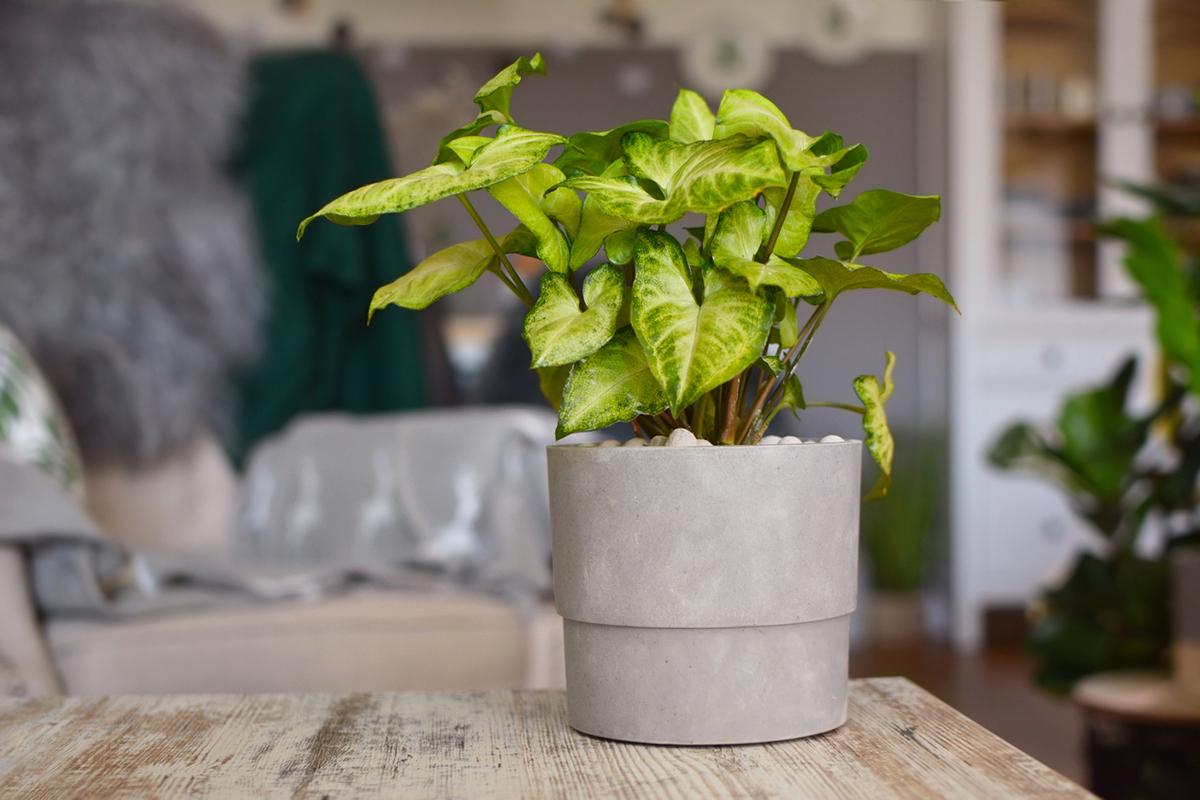
If you have pets, then skip ahead because the arrowhead vine — Syngonium podophyllum — is toxic to dogs and cats. (Although, it’s worth noting that if you have a well-behaved dog who won’t jump up and attack your hanging plants, then you could get away with an arrowhead vine. It’s up to you to assess the risk.)
If you don’t have pets, then the arrowhead vine might be a contender. Arrowhead vines love humidity, so they can thrive in high-moisture areas like kitchens, bathrooms, and maybe even basement apartments. They also come in various shades — green, pink, even a dark red — so they are the perfect décor accessory to add a bit of vibrance.
Baby’s tears
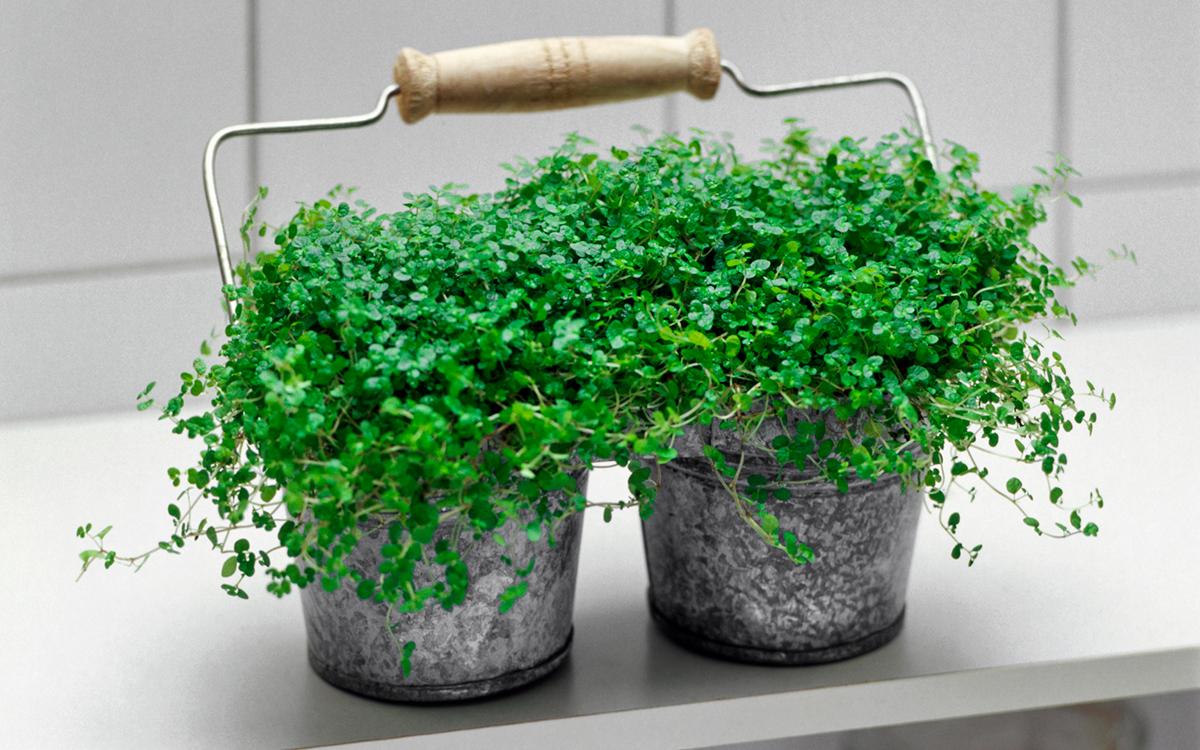
Baby’s tears are a member of the pilea family — hence their scientific name, Pilea depressa. While they are often a go-to pick for indoor terrariums, you also might want to consider a baby’s tears plant for your hanging pot, as their foliage grows out and wide. If given the space to grow, the vines will start to grow downward, creating a beautiful waterfall of almost triangular leaves.
Bird’s nest fern
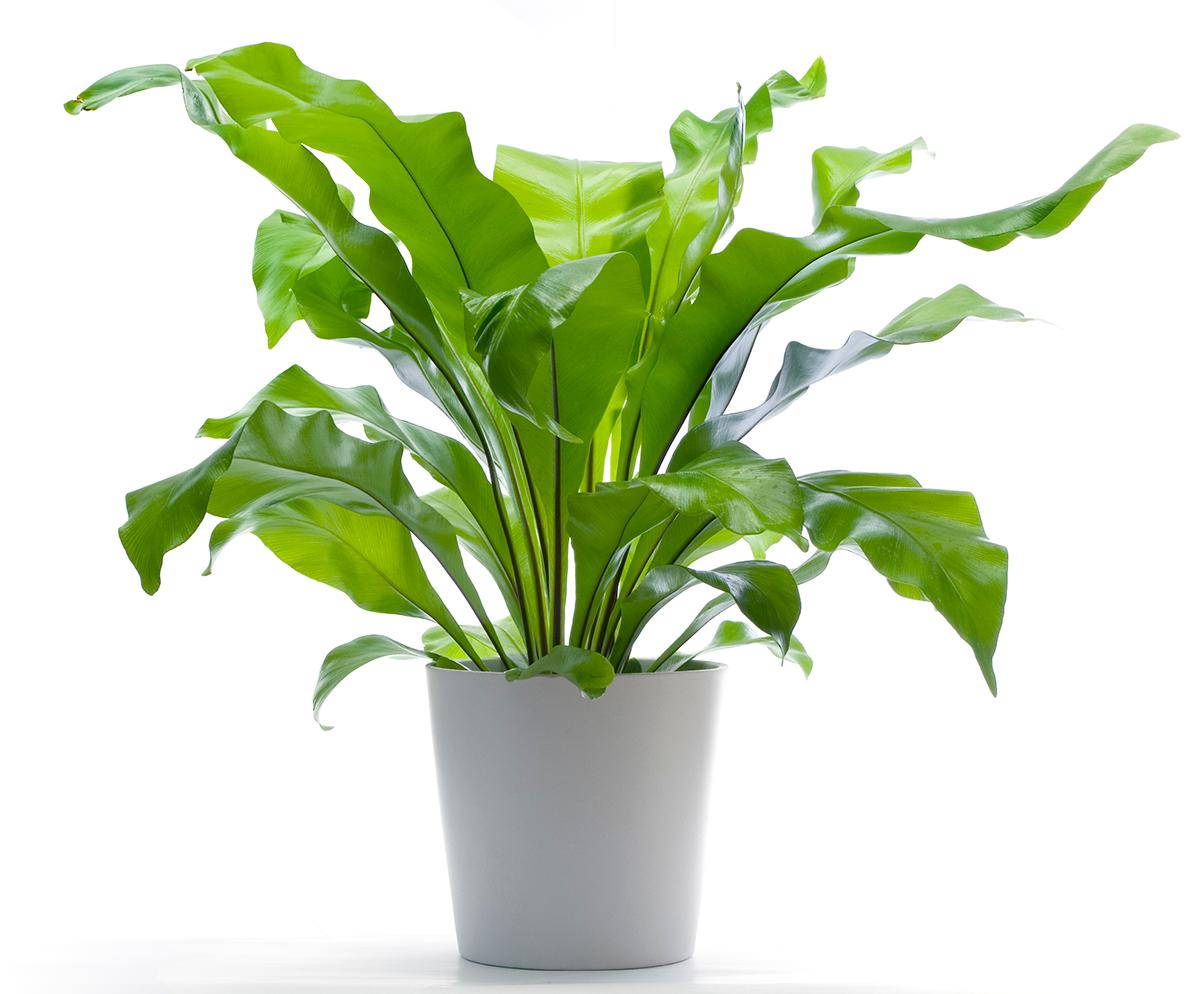
In general, ferns are an excellent choice for hanging plants indoors because the leaves of a fern spill over their container naturally. Known as the Asplenium nidus, bird’s nest ferns have curly leaves that will give you a run for your money. Not in a way that’s difficult, it’s just a unique feature of bird’s nest ferns that their crimped-looking leaves tend to change shape depending on how much light they’re getting. Bird’s nest ferns should be kept away from direct sunlight — to keep the leaves from shriveling up — so place near a window but make sure the lighting is indirect.
Boston fern
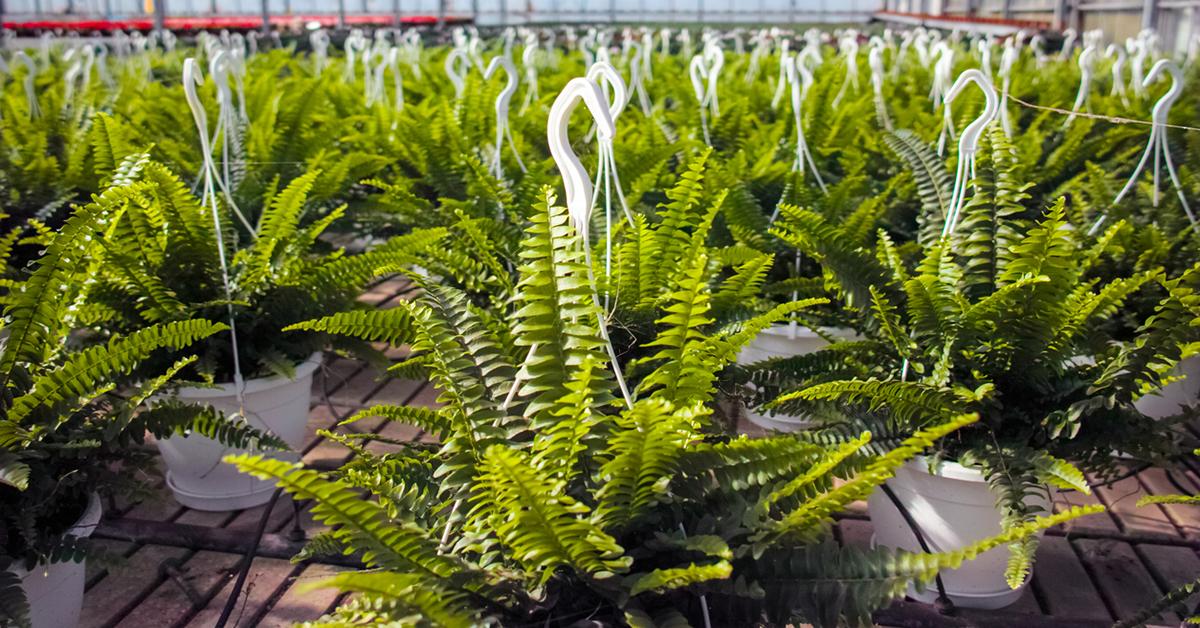
Whether or not you live in or near Boston, the Boston fern is another great choice for hanging plants indoors. The Boston fern, which is also goes by Nephrolepis exaltata, is a wise choice for high-humidity areas. To keep its leaves from becoming dry and brittle, you’ll want to spray it with water on the regular — meaning daily. Also something to note: The more light ferns are exposed to, the more growth you’ll likely get.
English ivy

English ivy are also known as “common ivy,” European ivy, or by their scientific name Hedera helix. From the plant family Araliaceae, this ivy is most often found in Europe and Western Asia, but could make a meaningful addition to homes anywhere. English ivy thrives in low light and their vines spiral down toward the ground the more room they’re given. You should water English ivy about once a week, keep the humidity low, and situate the pot in bright, indirect light. You might also want to keep English ivy out of reach of pets. If eaten, it could cause abdominal pain, diarrhea, or excessive salivation in pets.
Maidenhair fern
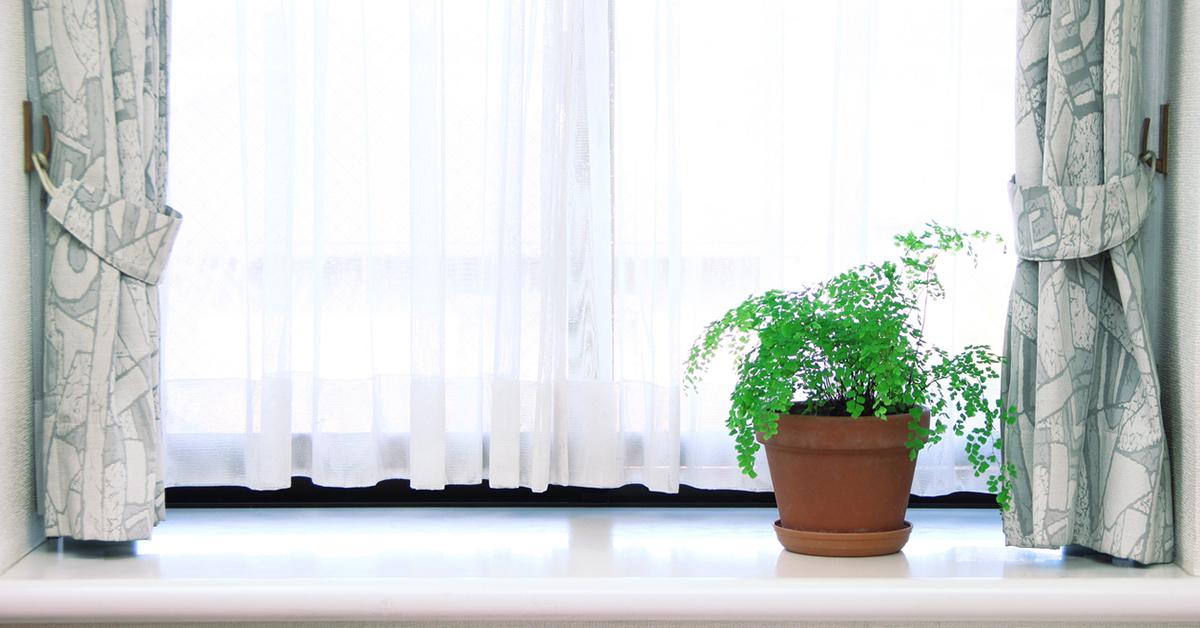
With the Greek genus Adiantum, the Maidenhair fern is one tough cookie. Adiantum actually means “unwetted” in Greek and was given to the Maidenhair for its unique ability to “shed water without becoming wet.” Imagine if we could swim without getting wet? #Jealous. Anyway, the Maidenhair is pretty low-key, as it enjoys humidity. Spritz it a few times a week and if the clover-like leaves start to look dry or brittle, up your watering to a more frequent schedule.
Philodendron
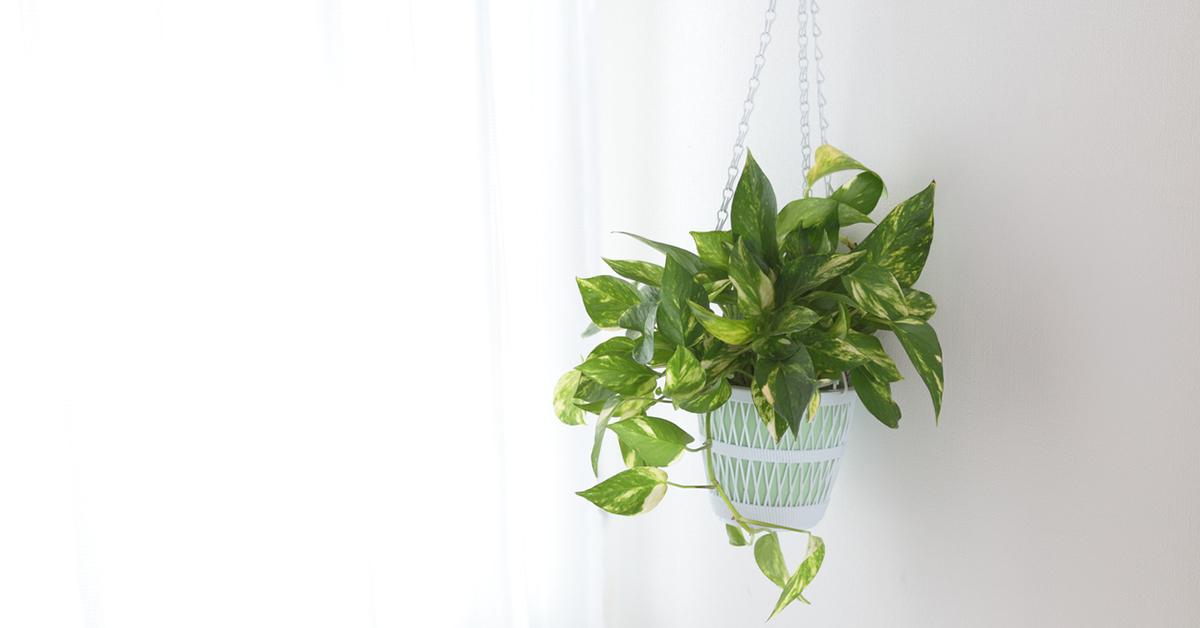
The Philodendron has become really popular in recent years. People love its heart-shaped green leaves that spill out and over their pot. They grow quickly, too, and are one of the easiest plants to take care of. (We even recommend them for greenery beginners — whether you pot your Philodendron in a hanging planter or standing!)
Pothos
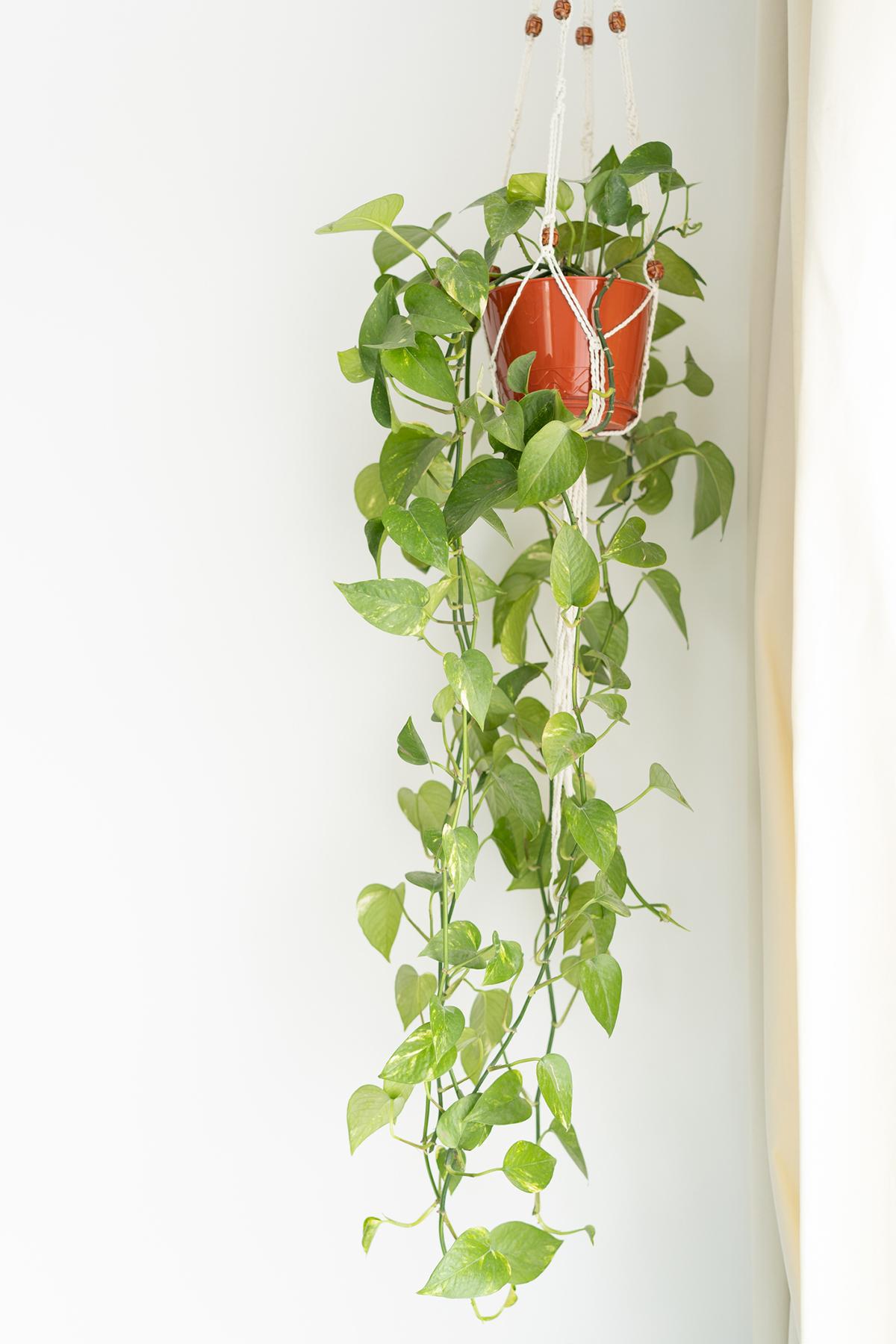
Pothos plants are a practical (and aesthetically pleasing) choice for so many reasons. First, these tropical vines do well in low-light conditions, so if you are worried about not having a whole lot of sunlight throughout the day, your pothos should still do well. Just like the Philodendron, it’s exceptionally easy to care for, and it definitely makes the list of houseplants that are perfect for beginners.
Pothos — which is also known as devil’s ivy, devil’s vine, golden pothos, silvervine, taro vine, money plant, and silver pothos — are efficient air purifiers as well, as they remove volatile organic compounds (VOCs) and other harmful toxins from the air. NASA found that pothos plants are particularly adept at ridding the air of benzene, carbon monoxide, formaldehyde, toluene, and xylene.
Spider plant
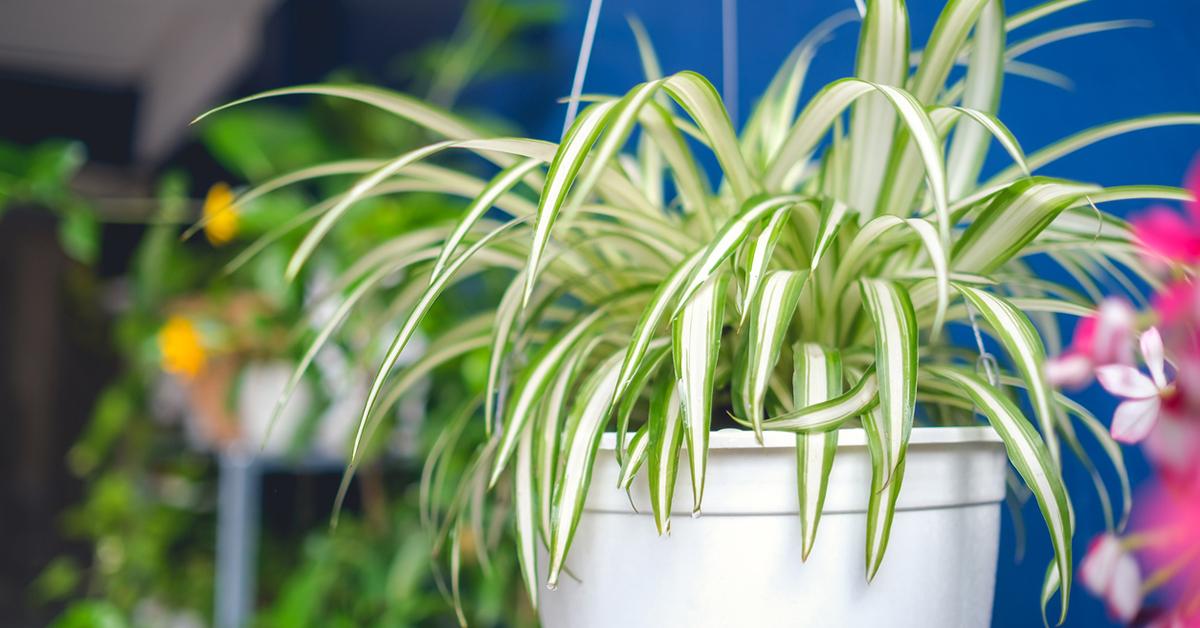
Everyone loves the spider plant also known as Chlorophytum comosum; if not for its naturally flowing leaves that trickle downward, also for its convenience and low maintenance. If it’s possible, hang your spider plant near a window and you should only have to water it one to two times a week. Other than that, spider plants are relatively effortless.
String of hearts
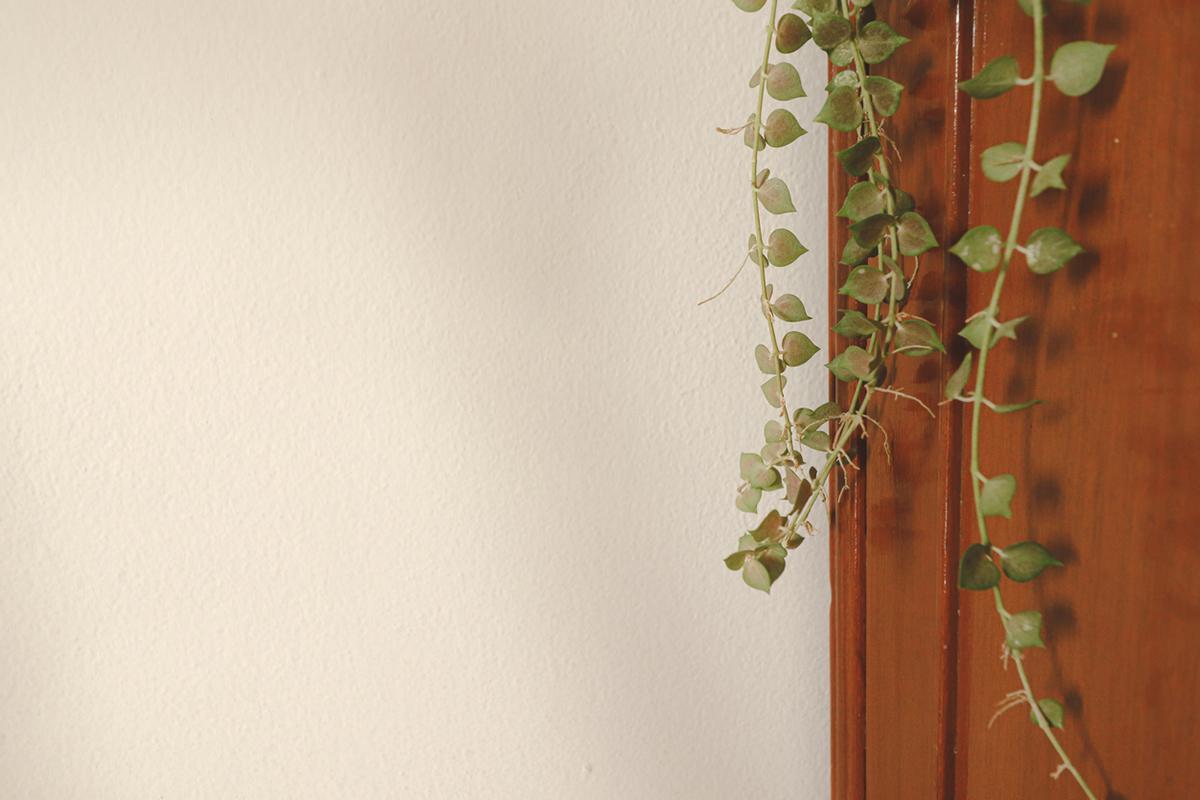
So named for a very good reason. String of hearts — also known as Ceropegia woodii — is a beautiful houseplant that grows long vines of heart-shaped leaves. The leaves of a String of hearts could be green, silver, and even some purple. These plants are perfect for hanging indoors because their vines cascade down from the hanger, continually growing as long as there is room for the vines to expand.
String-of-pearls
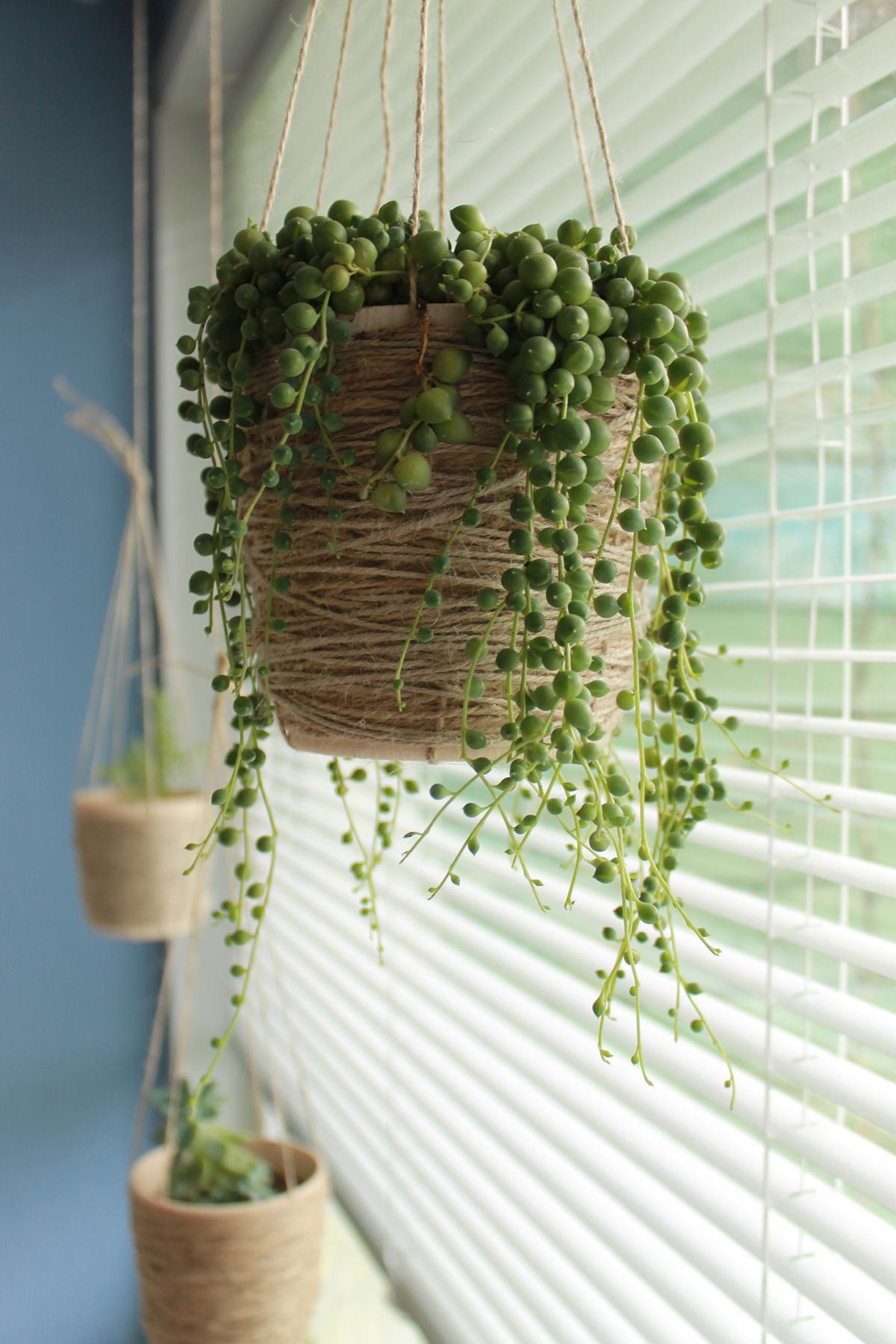
If you follow any established plant accounts on Instagram, then the string-of-pearls probably looks familiar. These sweet beaded plants shot to IG popularity (and real-life popularity) sometime between 2018 and 2019. Also known as Senecio rowleyanus, this plant’s “leaves” grow in little beads that almost look like peas.
Fun fact: The beads actually fill themselves with water, absorbing the bulk of what you water them, and storing it for later should the plant experience a dry spell (vacations happen). Not only do they look pretty, they’re also a meaningful conversation starter. Hang a string-of-pearls in the guest room and your visitors will for sure be asking you, “What kind of plant is that?”